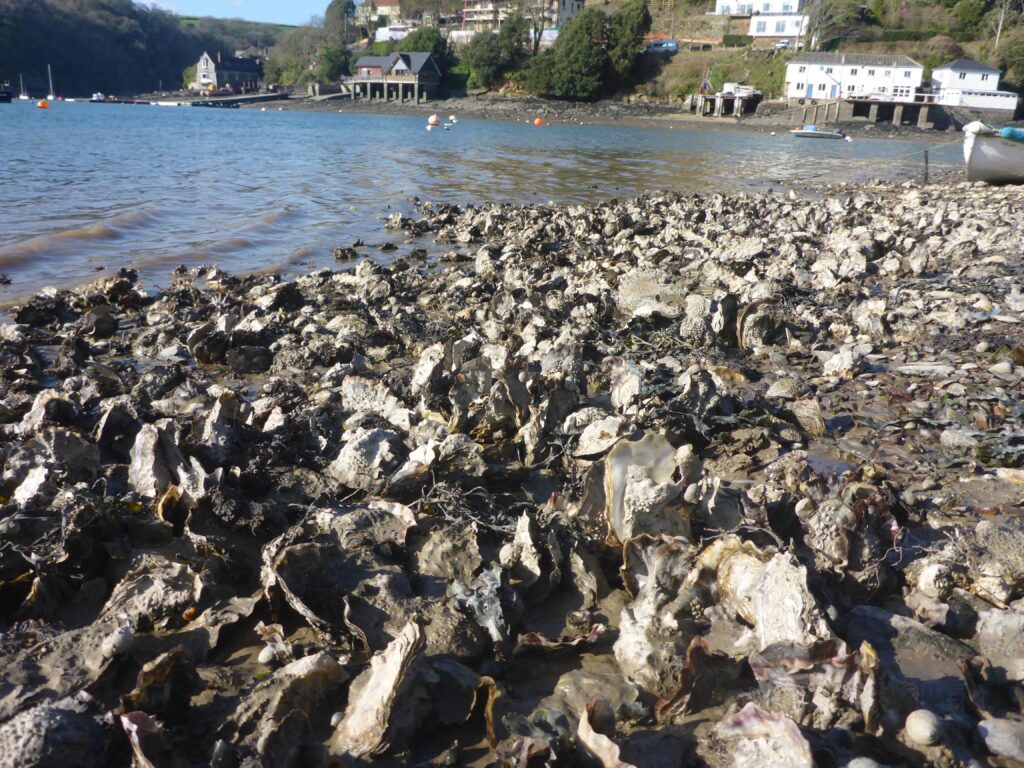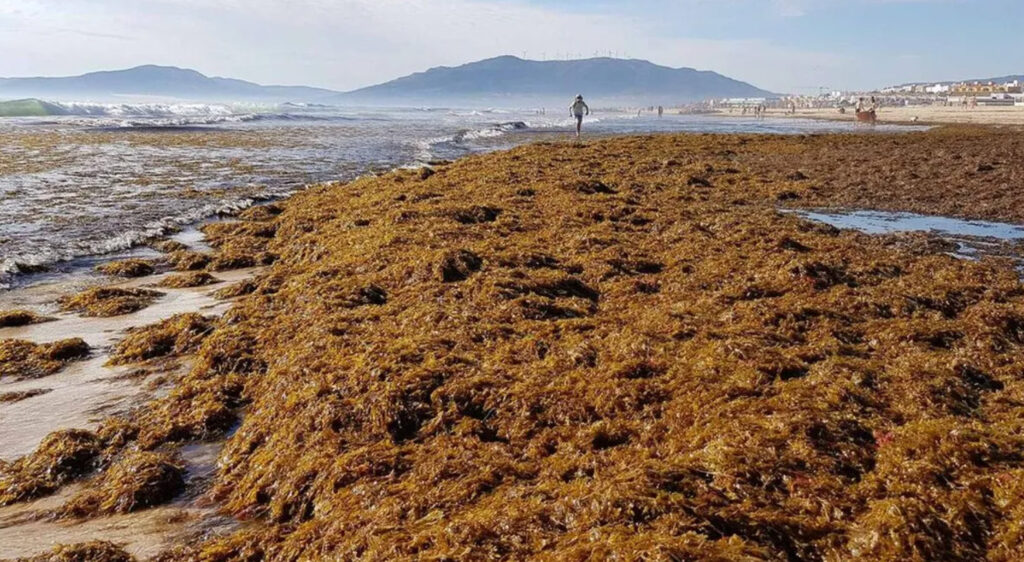Following Invasive Species Week last week, and for the start of the the Big Rock Pool Challenge: National BioBlitz, MBA Associate Fellow, Dr John Bishop, explains the basics of understanding non-native species and the threats they pose to our native coastal marine life.
What are invasive (non-native) species?
Non-native species are those that are living outside their native range, having been spread to another region by human activities, either deliberately or accidentally. They are regarded as invasive if they harm native biodiversity, damage economic interests, or endanger human health, hence ‘invasive non-native species’ (INNS).

Crowded Pacific oysters (Magellana gigas) with sharp-edged shells pointing upward on the shore in a Devon estuary. c. John Bishop Marine Biological Association
Why do invasive species matter?
INNS can harm native species by eating them or competing with them for food or space. They can hybridize with closely-related native species, or infect them with new diseases or parasites.
Some INNS can alter habitats, causing native assemblages to change profoundly. Fouling marine species, growing attached to solid man-made surfaces, can impose substantial economic costs: hull fouling of ships increases fuel costs unless subjected to expensive control measures, while marine growths can clog the cooling water intakes and pipes of coastal industrial sites such as power stations.
In aquaculture sites, fouling by non-native species can make underwater equipment heavier and more cumbersome, while attachment of non-natives to commercial shellfish can disfigure them and necessitate additional processing. Commercial species can escape from aquaculture facilities and establish wild populations showing invasive behaviour.
INNS can degrade amenity shores, discouraging holidaymakers from visiting and thus harming local economies; examples include banks of rotting non-native seaweeds cast up on sandy beaches, and sharp-edged oyster shells forming intertidal reefs. Contact with a few marine non-natives can result in rashes or painful stings.

The non-native brown seaweed Rugulopteryx okamurae, cast up on a Spanish beach. c. María Altamirano/Universidad de Málaga
What role does the MBA play in monitoring INNS?
The MBA (Bishop Group) currently curates all information on marine NNS for GBNNSIP (the Great Britain Non-native Species Information Portal): risk assessments, species arrivals, distribution changes, data for the annual B6 environmental indicator, species fact sheets, and register entries.
Chris Wood and John Bishop were Marine Team leader and team member respectively for the GBNNSIP 2025 GB Horizon Scan exercise to update the target list of non-native species likely to arrive, establish and have an impact in Great Britain over the next 10 years.
The MBA (Bishop Group), working with Natural England and Natural Resources Wales, recently completed non-native species surveys of 51 English and Welsh marinas. A 29% increase in non-native records since comparable surveys of the same sites in 2014-16 was documented, with up to 24 fouling non-natives per marina.
For people wanting to recognise marine non-natives, the MBA’s Identification Guide for Selected Marine Non-native Species deals with 38 species that can be found in ports and marinas, on boat hulls, on fishing gear, or on natural shores. Click here to download the guide.
Become a MBA Member Today – Save 25% with Code: Ocean25
- Offer valid from 7- 31 May 2025 (Monthly payments only)
- Join here.
Your membership:
- Supports globally significant pioneering marine research tackling the climate and biodiversity crisis.
- Funds vital marine conservation efforts in UK and international waters.
- Develops our existing presence in marine policy, working closely with organisations across the globe to meet the challenge of oceanic sustainability.
MBA Membership gives you access to your own personalised MBA members online area, exclusive publications including the quarterly Marine Biologist magazine, the National Marine Biological Library collections and facilities, jobs and careers information, discounts on events, access to bursaries and more.
Join us – Become a MBA Member today.